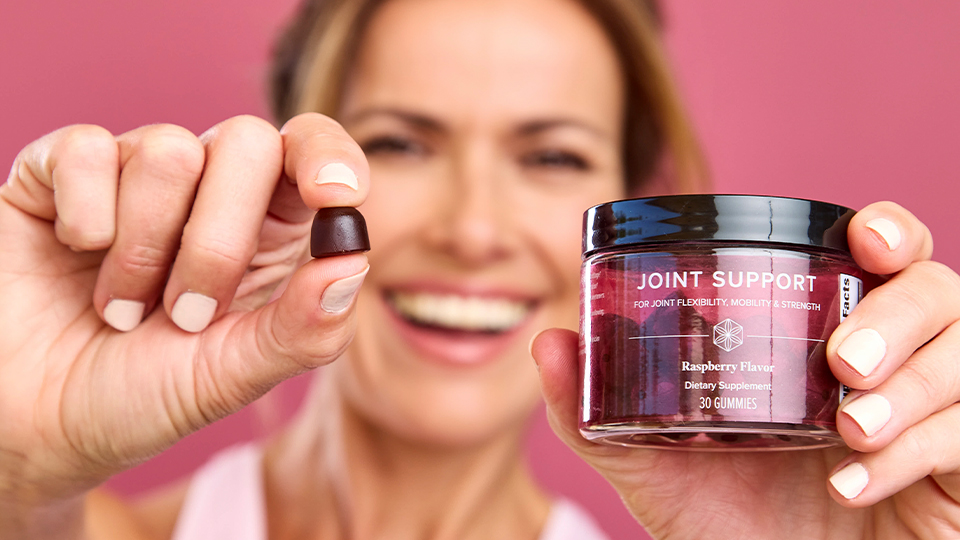At the Colgan Institute, we have used creatine very successfully as part of our sports nutrition program for the last 25 years. In a comprehensive review of more than 500 controlled studies in 2010, the International Society of Sports Nutrition, whose members are mostly university sports scientists and university athletics coaches, strongly endorsed use of creatine to improve sports performance (1).
If you have used creatine without good results, you are using it wrongly or using the wrong form, or using substandard, or oxidised creatine. There’s a ton of inferior creatine for sale and a ton of wrong advice on how to use it. Here is the science.
How Creatine Works
Adenosine triphosphate (ATP) is composed of one molecule of adenosine and three molecules of phosphate. Muscle can store only enough pre-formed ATP to provide immediate energy for about five seconds of maximum muscle contraction. When ATP releases energy, it discards one of its phosphates to become adenosine diphosphate (ADP).
Creatine phosphate is the second string of our energy cycle. Muscles can store enough creatine phosphate to continue exercise for about another five seconds, at near maximum contraction. Contraction can be only near maximum because creatine phosphate is not immediate. It first has to regenerate ATP. By donating its phosphate molecule, it turns ADP back into ATP to fire again. This is called the ADP-ATP shuttle.
Humans are designed with enough muscular energy for only five seconds of immediate maximum contraction from ATP. Then we get another five seconds of near maximum contraction from ADP, a total of ten seconds of maximum anaerobic effort.
That’s why the sprint distance evolved to be 100 meters, a distance good sprinters can cover in ten seconds. After ten seconds, the body has to rely on glycogen and fat to regenerate ATP. This is a much slower process, and is well below sprint performance.
During endurance running, good athletes perform near their anaerobic threshold, (commonly called VO2max, but not quite the same). They are constantly tapping into the edge of the creatine system, to provide a little extra energy. So it makes sense that, if you can load the creatine system, you will have a bit more reserve at the anaerobic threshold, and can run a bit harder, before emptying your stored ATP and going completely anaerobic.
Scientists have known this basic biochemistry of energy use for more than a century. But no one knew how to improve it chemically. In the late 1980s, Paul Greenhaff and Roger Harris began to test creatine at Karolinska Institute in Sweden.
They found that wild animals have much higher muscle creatine levels than domestic animals, likely because of the increased anaerobic exercise required to survive in the wild. They reasoned that athletes are more like domesticated animals, and might benefit from increasing their creatine levels. Using creatine monohydrate supplements and strenuous exercise, they found they could increase an athlete’s muscle creatine by up to 50 percent. The creatine supplementation significantly increased maximum muscle contraction and maximum power by five percent (2,4).
It was such a large increase that few believed the studies. But some training facilities, including the Colgan Institute, started to use creatine monohydrate with athletes training for the Track and Field World Championships, and the 1992 Barcelona Olympics. British coaches used it extensively. The London Times reported on August 7, 1992 that British Olympian Sally Gunnell trained with creatine. In 1992 she won the Gold Medal in the 400 meter hurdles. In 1993, she broke the 400 meter hurdles World Record. Creatine has been enabling athletes to break records ever since (1).
Creatine Is Safe
Creatine loading greatly increases kidney excretion of creatinine, a waste product of creatine. Some medical folk used to warn athletes that this increased creatinine clearance could damage the kidneys. In numerous case studies at the Colgan Institute, normal subjects aged 25 to 70, taking repeated cycles of creatine, have shown no evidence of kidney damage or other effects on kidney function.
In well controlled studies on kidney function, healthy men aged 18 to 35 were given a moderate intensity aerobic training program, plus ten grams of creatine per day, for three months, and compared with controls given only the training. Serum creatinine remained high in the creatine group throughout the training. Other measures of kidney function showed no evidence of detrimental effects (5, 6).
On the contrary, creatine supplementation is shown to improve insulin function. In 2011, researchers at the University of Sao Paulo, School of Medicine found creatine improved glycemic control and lowered hemoglobin-A1c, a good measure of improved blood sugar stability. The creatine showed zero adverse effects on kidney function (6).
Creatine In 2015
The latest controlled research extends the early studies handsomely. Despite all the claims in the marketplace for different types of creatine, only plain creatine monohydrate works in the controlled studies (7). In a review of 500 of these studies, eminent sports scientist Richard Kreider and colleagues of Texas A&M University, found that not a single study showed a negative effect of creatine on performance (1).
Here’s how we do it at the Colgan Institute. Together with high-intensity, daily training, we use 20 grams of creatine monohydrate per day, taken in four doses of five grams with meals, for seven days. This regimen reliably increases muscle creatine phosphate stores by up to 40 percent. Done correctly, it improves maximum one-rep power by up to 15 percent, and maximum muscle contraction by up to ten percent.
We do the extreme creatine loading to raise muscle creatine quickly, mainly because of the limited resources and time available to do the studies. For athletes who use creatine on their own, loading is probably unnecessary. In case studies we have found, that athletes using five grams of creatine monohydrate daily, gradually build up their muscle creatine over four to eight weeks, to almost the levels found in the laboratory.
After our seven day loading, we maintain muscle creatine levels for up to eight weeks with a maintenance dose of three grams per day. Depending on level of training, by about eight weeks the creatine uptake system tends to habituate to the extra creatine, and muscle creatine levels start to decline. When the decline occurs, we cease creatine use for six weeks, then repeat the cycle. This washout period re-establishes the body’s ability to raise muscle creatine levels again.
In running, we have found that our creatine program improves single sprint performance by up to five percent, and sprint repeats by up to 15 percent. Combined with the right training, the right protein, a full spectrum of micronutrients, and sufficient sleep, there is no other nutrient supplement that comes lose.
About Dr. Colgan
Dr. Michael Colgan is a world-renowned research scientist, leading expert in the inhibition of aging, and a member of the Isagenix Science Advisory Board. Dr. Colgan has provided nutrition, training and anti-aging programs to more than 11,000 athletes, including many Olympians. He is director of his eponymous Colgan Institute, a consulting, educational and research facility concerned with the effects of nutrition and exercise on athletic performance, along with prevention of chronic degenerative disease, and prevention of degeneration of the brain. Dr Colgan’s sports articles are published on his blog www.drmichaelcolgan.com.
References
- Krieder R, et al. ISSN exercise & sport nutrition review: research & recommendations Int Soc Sports Nutr. 2010; 7: 7. Published online 2010 February 2. doi: 10.1186/1550-2783-7-7.
- Harris R, et al. Elevation of creatine in resting and exercise muscles of normal subjects by creatine supplementation. Clin Sci.1992;83:367-374.
- Greenhaff PL. Influence of oral creatine supplementation of muscle torque during repeated bouts of maximal voluntary exercise in man. Clin Sci (London). 1993;84(5):565-571.
- Greenhaff PL. Creatine and its application as an ergogenic aid. Int J Sports Nutr. 1995;5:S100-S110.
- Gualano B, et al. Effects of creatine supplementation on renal function: a randomized, double-blind, placebo-controlled clinical trial. Eur J Appl Physiol. 2008;103(1):33-40.
- GualanoB, et al. Creatine supplementation does not impair kidney function in type 2 diabetic patients: a randomized, double-blind, placebo-controlled, clinical trial. Eur J Appl Physiol. 2011 May;111(5):749-56.
- Hall M, Trojian TH. Creatine supplementation. Curr Sports Med Rep. 2013 Jul-Aug;12(4):240-4.





